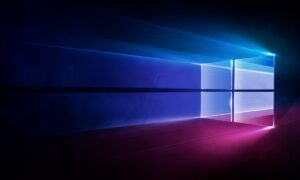As technology continues to advance at an unprecedented rate, one company has consistently stood at the forefront of innovation – Microsoft. Over the years, Microsoft has redefined the tech landscape, with its Windows operating system being a cornerstone of its success. In this article, we will delve into the journey of Windows 10 to buy Windows 11, exploring the evolutionary process, key features, and the impact it has on users in Canada.
The Birth of Microsoft and Windows
Microsoft’s inception traces back to April 4, 1975, when two young visionaries, Bill Gates and Paul Allen, set out to create a software company that would revolutionize the world of computing. Their determination and ingenuity quickly established Microsoft as a prominent player in the industry.
In 1985, Microsoft launched its first version of Windows, which introduced a graphical user interface (GUI), allowing users to interact with their computers more intuitively. This marked the beginning of a transformative era for personal computing, setting the stage for future iterations.
Windows 10: A Game-Changer
Fast forward to July 29, 2015, Microsoft released buy Windows 10 – a landmark version that aimed to bridge the gap between traditional desktop users and the mobile world. Windows 10 showcased a streamlined design, intuitive start menu, and seamless integration across devices, garnering widespread popularity and becoming the most widely used OS globally.
Key Features and Advancements
Windows 10 introduced numerous innovations that elevated user experience. The inclusion of Cortana, a virtual assistant, brought voice interaction to the forefront, allowing users to perform tasks hands-free. Microsoft Edge, the modern and efficient web browser, enhanced browsing security and speed.
Moreover, Windows 10 focused on gaming enhancements through DirectX 12, offering improved graphics performance, making it a favorite among gamers in Canada and beyond.
Enter Windows 11: A New Horizon
Building on the success of Windows 10, Microsoft continued its quest for perfection and unveiled Windows 11 on October 5, 2021. This new iteration was designed to further enhance productivity, creativity, and security for its users.
Redesigned Start Menu and Taskbar: Windows 11 embraced a centered Start Menu and Taskbar, providing a fresh and modern look while maximizing usability.
Snap Layouts and Snap Groups: Multitasking became more efficient with Snap Layouts, enabling users to arrange multiple windows in preset layouts. Snap Groups facilitated seamless transition and organization of multiple apps across different workspaces.
Microsoft Teams Integration: Recognizing the importance of remote collaboration, Microsoft integrated Teams directly into Windows 11, simplifying communication for users across Canada and the world.
Gaming Performance: Windows 11 took gaming to new heights with Auto HDR, DirectStorage, and an enhanced Xbox app. These features combined to deliver superior gaming experiences, ensuring Canadian gamers could immerse themselves in their favorite titles like never before.
The Impact on Canadians
The release of Windows 11 sparked excitement among Canadians. Its sleek design, productivity-focused features, and gaming enhancements resonated well with tech enthusiasts and professionals alike.
Windows 11 has also embraced a commitment to sustainability and accessibility. The OS optimizes power usage to reduce carbon emissions and introduces accessibility improvements, making it more inclusive for users with diverse needs.
Security and Privacy: A Paramount Concern
With technology advancing at a rapid pace, the need for robust security measures has never been greater. Microsoft understands this and has made significant strides in enhancing security and privacy features with both Windows 10 and Windows 11.
Windows 10 introduced Windows Defender, a built-in antivirus solution that provided real-time protection against malware and other threats. It also featured BitLocker, a full-disk encryption tool that safeguarded sensitive data from unauthorized access.
Building upon this strong foundation, Windows 11 further strengthened security by introducing Windows Hello, a biometric authentication method that allows users to sign in using their face or fingerprint. The OS also introduced a new feature called “Microsoft Pluton,” an integrated security processor designed to protect against firmware-level attacks.
In terms of privacy, Windows 11 took a user-centric approach by providing more transparency and control over data sharing settings. Users in Canada now have a clearer understanding of how their data is being used and can customize privacy settings to their preferences.
The Path to Upgrading: From Windows 10 to Windows 11
The transition from Windows 10 to Windows 11 has been relatively seamless for most users, thanks to Microsoft’s dedication to user-friendliness. To facilitate this process, Microsoft offered eligible Windows 10 users a free upgrade to Windows 11 during a specified time frame.
Compatibility played a crucial role in the upgrade process, ensuring that existing hardware and software were fully supported on the new OS. As a result, Canadians experienced a smooth transition to Windows 11, without having to worry about losing data or compatibility issues.
Embracing a Cloud-Centric Ecosystem
Another significant trend that emerged during the evolution of Windows is the shift towards cloud-centric computing. Microsoft has been at the forefront of this paradigm shift with its cloud-based services like Microsoft 365 (formerly Office 365) and OneDrive.
Windows 10 saw the integration of cloud features into its core functionalities, such as syncing settings across devices and accessing files from anywhere via OneDrive. This approach continued with Windows 11, where cloud integration became even more pronounced, allowing users to seamlessly access their files, settings, and preferences across different devices.
Conclusion: A New Era of Possibilities
As we reflect on the journey from Windows 10 to Windows 11, it becomes evident that Microsoft’s commitment to innovation and user-centric design has been the driving force behind its success. Both operating systems have brought transformative experiences to users in Canada and beyond, redefining the way we interact with technology.
Windows 11 represents a new era of possibilities, where productivity, creativity, and security converge in a cohesive and seamless manner. As technology continues to evolve, Microsoft’s legacy as a pioneer in the tech industry remains steadfast, and users in Canada eagerly anticipate what the future holds for the Windows ecosystem. With every iteration, Microsoft proves that it is more than just an operating system; it is an enabler of dreams and a catalyst for progress in the digital age.



































